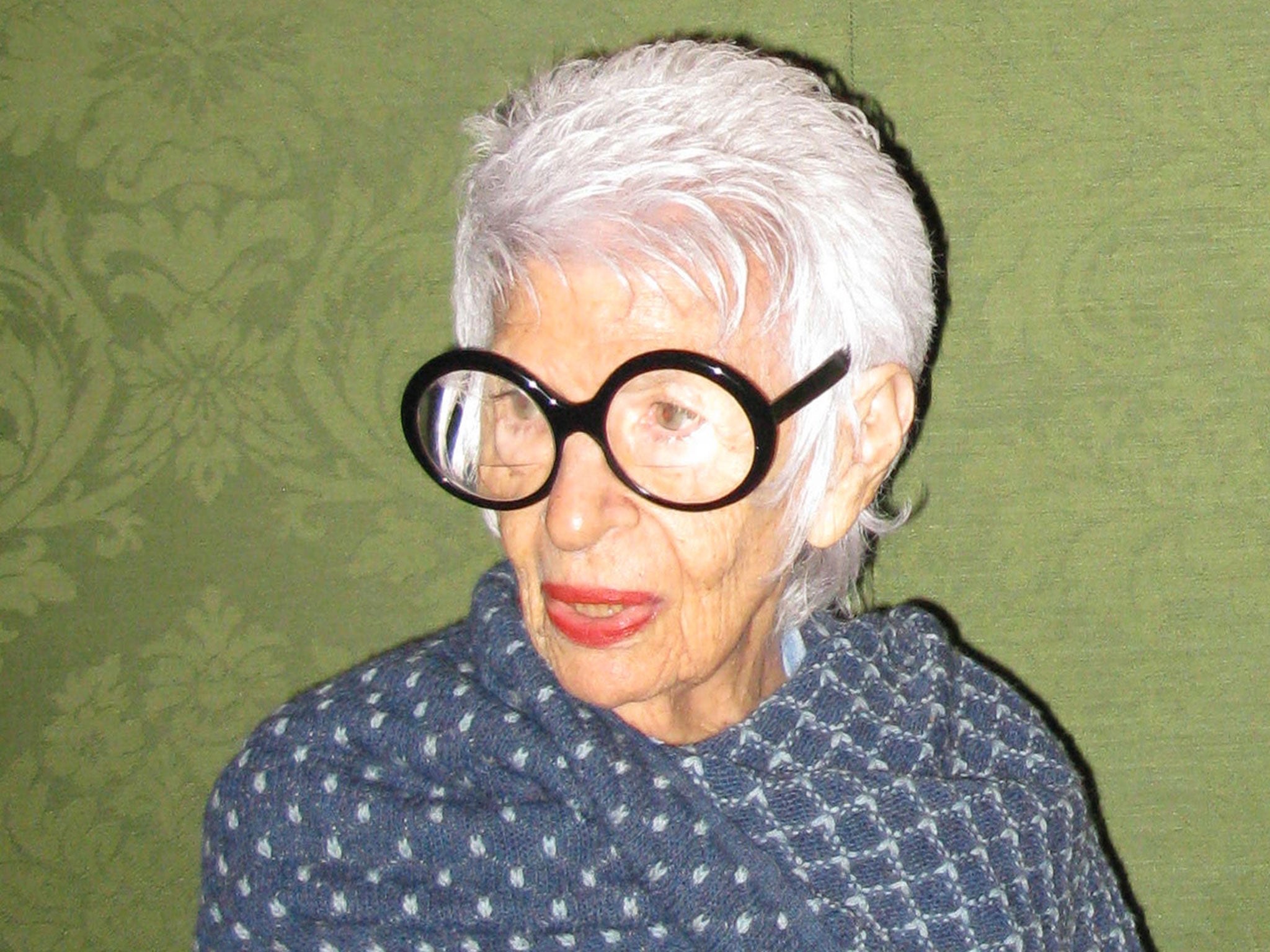Fly-on-the-wall documentaries are making stars of fashion's most colourful characters
With Iris Apfel on Netflix, Jeremy Scott in cinemas, and Christian Louboutin on TV, the documentary is on trend in fashion. But as audiences gain a longed-for insight into this elite world, can any film truly be 'warts-and-all'?

From Funny Face in the Fifties, via 1966's Who Are You, Polly Maggoo? to the more recent The Devil Wears Prada, the fashion world has been at home on the big screen for a long time. But where we were once satisfied with these fictionalised – and suitably scandalous – accounts of the rarefied world, we now hanker for something altogether more real. Truth, as they say, is stranger than fiction; which perhaps explains why the documentary is one of the biggest trends in fashion this season.
In cinemas now is The People's Designer, which profiles Jeremy Scott's first season at Moschino, while Iris, the documentary about Iris Apfel, which was the final work of the respected film-maker Albert Maysles, has just arrived on Netflix. On the small screen, Channel 4 viewers were recently privy to the wild world of Christian Louboutin while British Vogue will celebrate its centenary with a BBC documentary to air next year. It seems that we're no longer content wearing clothes by our favourite designers – we now expect intimate access to their worlds, too.
That intrigue is to be expected – after all, these brands' bread and butter is creating a fantasy world for customers to buy into.
Fashion News in Pictures
Show all 22
“The fashion world is one that fascinates: the glamour, the controversy, the personalities, the elitism – any insight into that is exciting,” says Hanna Woodside, features and entertainment writer at Glamour. “As brands, models and industry insiders increasingly allow access to that world via Instagram and other social media, the appetite to peek into that world grows, too: we want to know – and see – more.”
Perhaps, then, the rise of the non-fiction fashion film is a reflection of the way that the industry is not only viewed, but interacted with today. Before smartphones and social media enabled almost anybody to see the inside of a fashion show, such things were industry-only events. This week, Burberry debuted its designs for spring to the public on Snapchat before they even reached the catwalk, from where they were further shared by the audience. Canny brands know that engaging with their internet-obsessed young admirers allows them to lay the foundations for loyal future customers.
Brands are increasingly using their considerable coffers to cement their place in the larger cultural conversation; once the reserve of “high” art forms, fashion-focused exhibitions are now a regular occurrence. The people controlling most luxury fashion brands are notorious control freaks – be they designer, marketer or business brain – so the appeal of an exhibition is obvious: it can be meticulously stage-managed to create exactly the impression they want it to. But most exhibitions are inherently limited in their scope. The fashion film, however, can be widely distributed and seen by even more potential customers, and can even live on in perpetuity thanks to streaming sites. The question of what the masses are allowed to see is a trickier one for brands to answer. A good documentarian will inevitably capture the bad moments along with the good, so how important is it to the value of the film that both make it into the final cut?
Interestingly, reviews for The People's Designer praise the way that it depicts both Scott's journey from his rural roots and the negative reactions that his first Moschino collection received. The rough, in this case, validates the smooth, providing a balance and honesty that other films haven't managed so well.
“Dior and I ostensibly gives unfettered access to Raf Simons' debut collection,” says film critic Hannah McGill. “But it conspicuously ignores the Galliano kerfuffle [the furore over his antisemitic outburst] that preceded it, and feels pretty compromised as a result.” But that compromise, believes McGill, is the inevitable price viewers pay to be able to take such a close look behind the scenes. “Fashion houses and their processes being very secretive, it would be hard to gain access to inner workings without negotiations over the tone of the portrayal. So warts-and-all becomes a little hard to do, and the house has even more leverage if it contributes financially to the film. But audiences aren't necessarily wanting or expecting warts. They want to see a certain level of obnoxiousness tempered by a covetable lifestyle and a raging commitment to beauty, and probably most people are OK with being portrayed that way, even the designers who have a tendency to be sensitive and vain.”
Forget the looks inside the atelier, at the pattern-cutting and model-fitting and the actual how and why of creating a collection, it is that close up portrayal of a captivating, creative personality that unites the best fashion documentaries of recent years. That's a trend that's echoed elsewhere in the film industry, but perhaps the fashion world's singular ability is just how well it can dress those characters up and make them shine.
Subscribe to Independent Premium to bookmark this article
Want to bookmark your favourite articles and stories to read or reference later? Start your Independent Premium subscription today.

Join our commenting forum
Join thought-provoking conversations, follow other Independent readers and see their replies